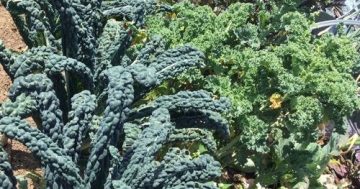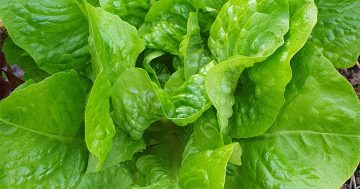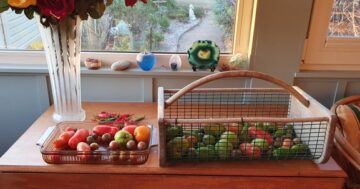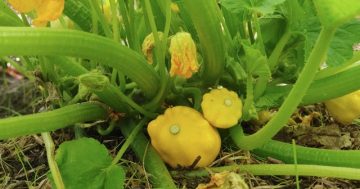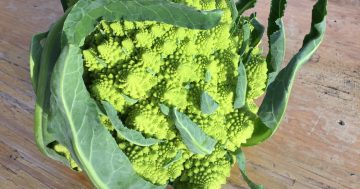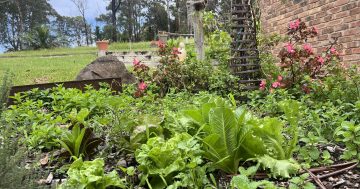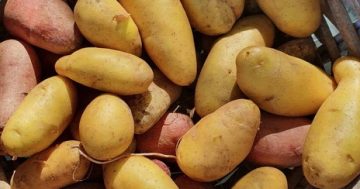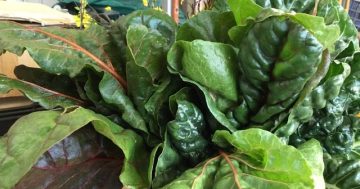
Joi choi is ready to eat now and still planting well. Photo: Wynlen House.
It’s May, and while the frost season is now with us, it is lovely to be able to enjoy this flush of mild weather as we continue through the transition month between the seasons.
The recent rain was very welcome and, hopefully, this will see the end of the recent dry spell and a return to more regular rainfall. However, generally, autumn through winter tends to be drier with variable rainfall, the reason we have frosty mornings and sunny days.
Autumn into winter is often a time when we need to water the garden and a dose of liquid fertiliser, particularly seaweed-based, can help prepare plants for the frosty times as well as providing added nutrients to keep your vegetables producing.
The mild weather extends the peak growing season for your vegetables and as they continue to grow they need their nutrients to keep producing.
This weather also means that soft leafy greens planted early in Autumn such as lettuce, rocket and coriander are continuing to do well, and members of the choy family (bok, joi, sum and pak) will be positively thriving.
Joi choi is our most favoured variant of the pak choy group. It is an incredibly versatile green. Finely sliced with a sweet, salty, sour dressing and a crunchy element such as dried noodle, it makes a delicious, tasty autumn salad. Diced and added to your next casserole or curry, the joi choi contributes a dose of leafy green goodness that lifts root vegetable dishes to another level.
The Asian greens do very well in our cold climate and you can continue to plant them as seedlings and seeds until June. But by mid-winter, the lower soil temperature will limit seed germination so plant your seeds this month if you can.
The chois are part of the brassica family as are their Japanese cousins the mizunas, mustard greens and tat soi. This group of vegetables, like all the brassicas, love well-composted animal manures and blood and bone. Blood and bone is a great source of nitrogen, phosphorus and calcium. These nutrients promote good flower development, which in broccoli, cauliflower, and many Asian greens are the parts of the plant we eat.
The Asian greens, and all brassicas in fact, have delightful tiny flatt-ish yellow flowers. These flowers are particularly attractive to many of our native bee species, along with any callistemon, melaleuca and leptospermum shrubs you may have in your ornamental garden.
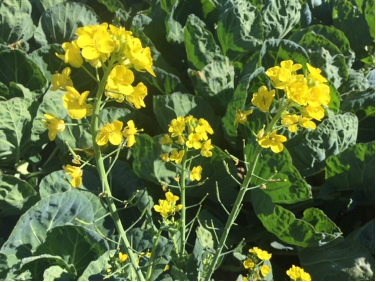
Leave some yellow brassica flowers for bees as the plants go to seed. Photo: Wylen House.
Leaving some brassica to flower and set seed will be even more of an enticement to passing native bees who will want to spend more time in your vegetable garden if they find their favourite vegetable flower there.
Both native bees and the European honey bee have a role to play in pollination. By having a variety of flower shapes and types in your garden both native and European bees can co-habitat happily in your vegetable patch. Some of the species you might expect to find in your garden are reed bees, lasioglossum, leioproctus, leacutter, masked bees and blue banded bees.
Over the next month, while the mild weather continues, keep planting out seedlings of your favourite Asian greens. If you can’t get seedlings you still have time to plant seeds.
Put out your amendments (manure, compost, lime, blood and bone, pelleted complete fertiliser) and dig in lightly. Plant nice and close, seedlings 10-18 cm apart, seeds very close and as they grow – eat the biggest first!
Continue to plant quick-growing Japanese turnips. They love the cool, mild weather. Tokyo market (white), hida beni (pink) can be planted as seeds and harvested at any size as they grow into early winter.
The big benefit of the Japanese turnip is that you eat the whole plant. Leaves are delicious raw or cooked and the turnip is mildly flavoured, crisp, and perfect when eaten raw as a healthy snack.
More information on native bees can be found at Encouraging Native Bees; Invertebrate Behaviour and Ecology Lab, by PhD student Yolanda Hanusch, or via Facebook.
Happy planting and harvesting!
Bronwyn Richards and Helen Lynch run Wynlen House Artisan Village Farm and Learning Centre, a small village organic market garden in Braidwood, NSW. Since 2006 they have grown and sold fresh vegetables, eggs, preserves and garlic, and teach others to do the same.












